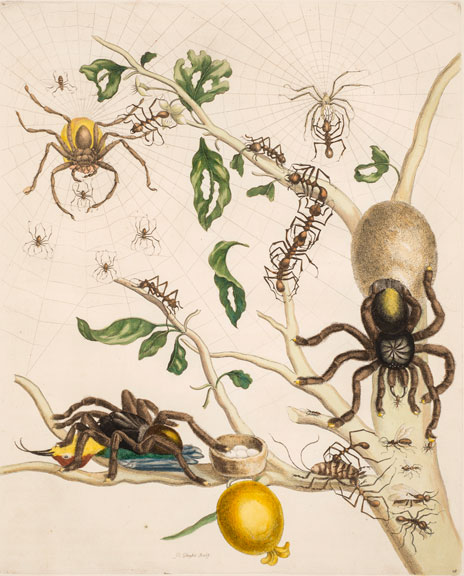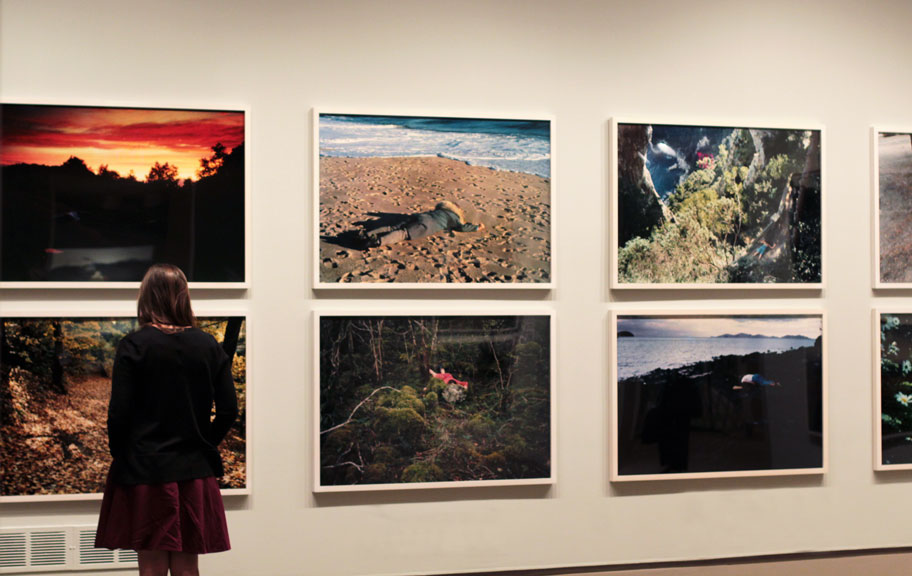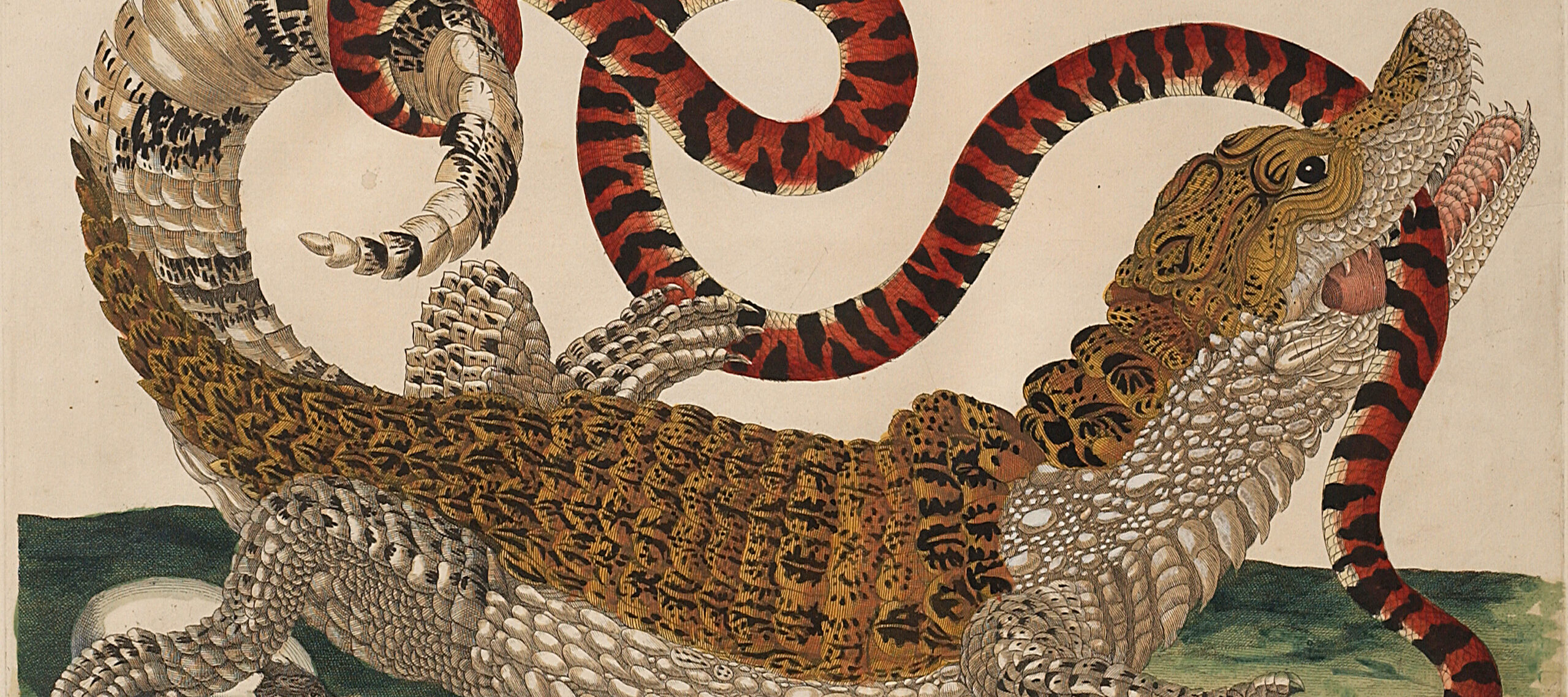During the press preview for Super Natural, NMWA Chief Curator Kathryn Wat stressed one fact above all others about featured artist Maria Sibylla Merian: this woman was radical. Not only did she divorce her husband, something that was socially taboo in the 17th century, but she traveled to Suriname accompanied only by her daughter.

Merian had grown bored with the dry and lifeless specimens of exotic insects that were available for study in the Dutch provinces. She wanted to see, study, and draw the creatures from life.
Even though her Dutch homeland was more liberal than other European countries, women in Merian’s society were restricted to sheltered traveling experiences such as the Grand Tour or family holidays. Sojourns outside of Europe almost never happened for women. It was certainly not conventional to go overseas without a male travel companion. Yet Merian did exactly that, refusing to bend to the social mores that controlled female exploration so strictly. In 1699, at age 52, the artist-naturalist embarked on her journey to South America, to Suriname, then a Dutch colony, to follow her passion for studying and depicting insect metamorphoses.
When one examines Janaina Tschäpe’s contemporary photographs, also on view in Super Natural, there is no immediate visual connection to Merian’s work other than the exhibition’s broad theme of female interaction with nature. However, Tschäpe cites Merian as a major artistic and feminist influence. For example, both artists focus on death and decay—Tschäpe depicts her own demise in many natural environments and Merian shows the constant and natural cycle of life and death.

Notably, the artistic visions of both Merian and Tschäpe required travel. Tschäpe has stated that her “100 Little Deaths” series visually explains how every person leaves a small piece of him- or herself in each new place they visit. From the intense detail and minute observation that Merian uses in her scientific prints, it is clear to any Super Natural visitor that Merian left parts of herself with the natural world in Suriname as well. Pioneering women like Merian opened the gates for future generations of women, such as Tschäpe, to use travel to follow their passions, artistic or otherwise.
Throughout history, men have been considered the more adventurous sex. Roving artists such as Maria Sibylla Merian and Janaina Tschäpe show that the realm of discovery and exploration does not solely belong to men. They, too, got their hands dirty, showed bravery in the face of treacherous or difficult circumstances, and eschewed their comfort zones in favor of travel and new experiences. These two women, working nearly 300 years apart, followed their artistic inspirations to explore their deep personal connections to nature.
